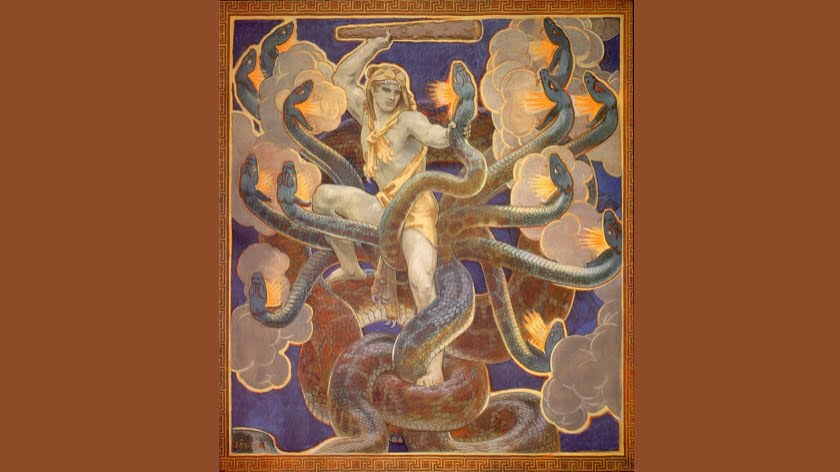Will Petrodollar Give Way to Petroyuan? China Makes First Move this March
Wall Street is bracing for a potential shake-up as China is set to launch its first-ever crude oil futures contract late March at the Shanghai Futures Exchange.
The move, which had been laid out in 2012 but faced delays over possible market turbulence, could represent a bold step forward in China’s rise as an economic superpower and global hegemon. The contracts will be priced in China’s currency, the renminbi or yuan, marking the birth of what many are calling the “petroyuan.”
Despite pessimism over China’s currency shift in U.S. business publications, the introduction of a petroyuan marks one of the most significant bids to date by countries seeking to dump the U.S. “petrodollar.” The move will also strengthen the ability of China — the world’s top oil importer in the biggest oil-consuming region on the globe — to determine the price of crude oil sold to its neighbors. As a result, China may soon become the strongest player in global crude markets.
Oil-producing nations like Russia, Iran, and Venezuela have been seeking to wean themselves from the U.S. dollar for several years, owing to the crippling effects U.S. sanctions and account freezes have had on their economies. However, faced with potential market shocks resulting from a phase-out of the dollar and a major currency switch, Washington’s commodity-producing rivals have proceeded in a cautious yet steady manner.
The cumulative effect of such efforts — and the increasing use of non-dollar currencies such as the euro, lira, rial, ruble, rupee and yuan in bilateral trade agreements — has eroded confidence in the dollar’s once-unquestionable grip on the world energy markets and the global monetary system. Meanwhile, the use of cryptocurrencies — such as the volatile and decentralized bitcoin or the recently-announced Venezuelan “Petro” — is increasingly being seen as a means to decouple from New York and escape the pain of U.S. sanctions.
The petrodollar cycle and the US deficit
The petrodollar has long given Washington a commanding edge in geopolitical rivalries: during the Cold War, the U.S. and its partner, Saudi Arabia, were able to flood global markets with cheap oil, causing a major economic crisis in the Soviet Union and other OPEC countries.
Following the 1973 Arab-Israeli War or “October War” of 1973, Arab members of the OPEC cartel led by the Kingdom of Saudi Arabia declared an embargo on the United States in protest of the billions of dollars in arms provided to Tel Aviv, sparking a major energy crisis.
The crisis was only defused after Washington and Riyadh agreed to denominate all future oil sales in dollars in exchange for military sales and protection.
Since then, the “petrodollar” has been the default global reserve currency and the main pillar of U.S. hegemony, requiring all nations to acquire dollars in order to purchase oil. In effect, in this new era, the crude oil standard displaced the gold standard. As most oil-producing nations enjoyed a windfall of greenbacks in exchange for their crude oil wealth, those same hundreds of billions of petrodollars were sent right back to U.S. financial markets in the form of U.S. Treasury bond investments — a process known as petrodollar recycling, which enabled the U.S. to continue maintaining its huge deficit.
China’s latest move was preceded by reports that for years it pressured Riyadh to accept its currency in bilateral oil deals. If the new oil futures contract takes off, analysts claim that anywhere from $600 billion to $800 billion in dollar transactions could be removed annually from the oil trade, resulting in a ripple effect that could see the rest of the oil market quickly shift away from the petrodollar.
In excerpts from a 2015 speech delivered at the People’s Liberation Army National University of Defense Science and Technology in Changsha, China, PLA Major-General Qiao Liang offered a trenchant criticism of the U.S.’s efforts to enforce the use of the dollar as the dominant currency in global trade:
I … want to tell everyone, the U.S.’s war in Iraq was not only for [raising oil prices]. It was also to keep the dollar’s hegemony … After the euro was created in 1999, [Iraqi President Saddam Hussein] announced that Iraq’s oil trade would be settled in euros. This angered the Americans, especially when many other countries followed suit. Russian President Putin, Iranian President Ahmadinejad, and Venezuelan President Hugo Chavez all made the same announcement. How could the Americans accept this?
Some people may think what I said was a fairytale. Let’s take a look at what America did after it won the Iraq War … The first order that the [U.S.-installed] government published was to announce that the Iraqi oil trade switched from the euro back to the dollar for settlement. This showed that America was fighting for its dollar.”
Top Photo | Visitors to an exhibit that gives the illusion of being three-dimensional pose near a scene showing late Chinese leader Mao Zedong with the Chinese yuan note and former U.S. President Abraham Lincoln with the U.S. dollar note in Beijing. (AP/Ng Han Guan)
By Elliott Gabriel
Source: MintPress News







